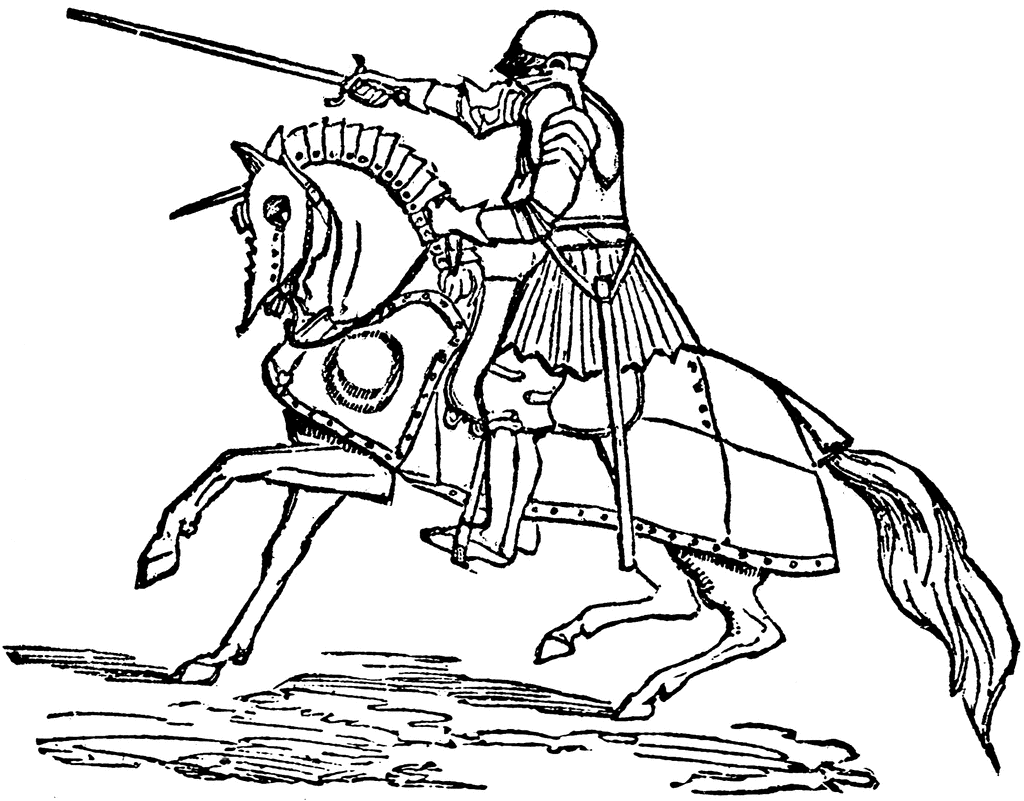English-speaking historians about the “great period” of “white armor” knights, Part 2
At the same time became fashionable wearing standardized by their cut and color suit, to a certain extent the previous army uniform. For example, in France during the Hundred Years’ War archers guard the king in 1449 received a uniform blue-white-red or green-white-red colors. That same year, Charles VII entered Rouen, accompanied by 600 soldiers’ bodyguard, each of which was the lance pennant red satin with a picture of a golden sun, and as for the British, they have, and in the XV and XVI centuries was wearing traditional costume at St. George’s red cross. Much less, but still often enough were used and other emblems, usually sewn on the front. At the same time, along with the state emblem, can be located and local.

During the XV century. Italian gunsmiths made a lot of armor, which, being Italian at its core, often differed from them in details, borrowed from the German masters. At the same time trade relations Germany and Italy converge in Flanders, we have created their own production with centers of Antwerp, Bruges and Brussels. Here widely armor mixed forms, for example, similar to what we know today, a painting by the Dutch artist Friedrich Herlin “Saint George and the Dragon” (1460), which is represented by a rider in a typical Italian “export” an armor and helmet Sallet German-Italian sample. The great demand among the British knighthood for Italian armor, according to Edge and Paddock, caused Wars of the Roses, which began almost immediately after the end of the Hundred Years War. At the same time the British gunsmiths – originally mostly Italians – made them a lot of elements of the German armor. For example, “heart-shaped” lateral bends kneecaps they were significantly smaller than armor directly exported from Italy.
In addition to the production of centuries in Italy, Germany and Flanders in the XV century, there were other national centers, in which an Italian master. In France, it was, above all, Tours, Lyon and Bordeaux, and in Spain – Burgos and Seville, where many armorers worked in Arab school traditions, because they belonged to the Moriscos – Moors Christianized. They displayed this in a sufficiently long manufacturing armor plate riveted on brigandine type. Spanish master was set up and a unique type of helmet, known kabasset, and subsequently spread to other European countries. However, a considerable variety of types and forms of protective arms polycentrism production is not promoted, which was due, primarily, with the concept of fashion to certain armor that was followed even with the name of the master. At the same time, achieve some masters rather quickly became the subject of imitation of others, is placed on the stigma of their products more famous gunsmiths, which, in turn, led to new borrowing and rapid replacement of one sample to another. In all there was only one, but it seems rather clear trend – namely, the strengthening of protective properties to any whatsoever types of armor while facilitating their use.
In recent years, in XV, knightly weapons became a subject of special concern sovereigns of Europe, in particular, the Emperor Maximilian I (1493 – 1519’s), create the type of knightly armor with the grooves on the whole surface (they facilitate the weight of armor and simultaneously gave her exceptional strength) and get in the end the name “Maximilian”. Almost unchanged, and it was used in the next – XVI century. However, this type of perfection armor paid for them too expensive price.
However, when Emperor Maximilian I focuses on the improvement of the knight’s armor, proved to be extremely high-quality and therefore very expensive, then the reign of King Henry VIII (1497 – 1547 years), according to British historian Thomas Richardson, can be described as the era of the old with the new connection, the heyday, but at the same time and the sunset “white” plate armor associated with the development of firearms.